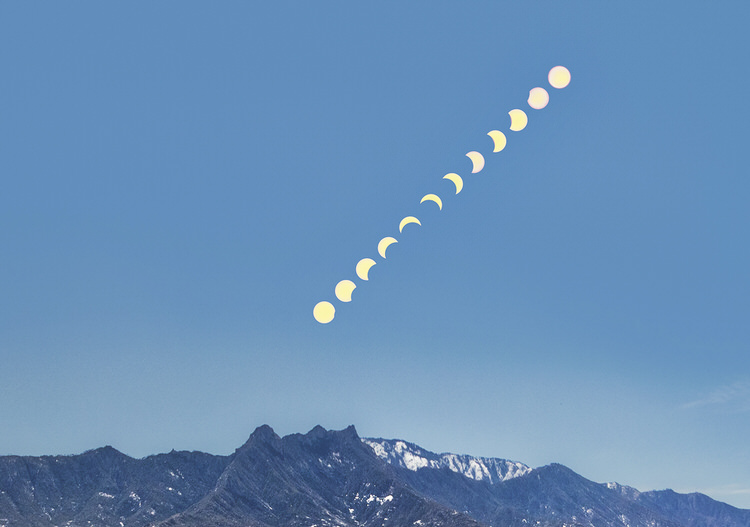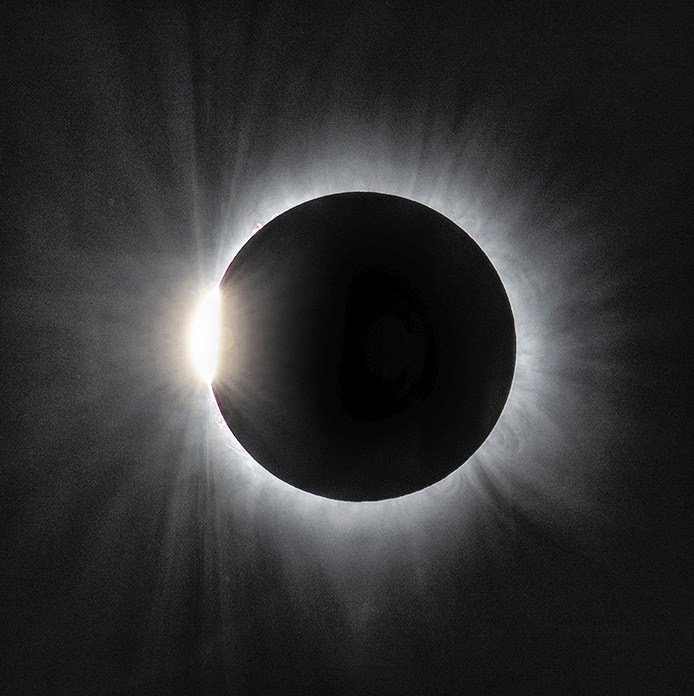
Composite Depiction of the Partial Solar Eclipse Over the Catalina Mountains, by Robert Shea

The Diamond Ring Occurring Just Before Totality, by Mark Guinn
Robert W. Shea
Several members of the SaddleBrooke Photography Club aimed their cameras skyward on the morning of April 8 in an attempt to record the celestial event on their digital devices. A dark solar filter was required to lessen the luminance of the sun and prevent damage to the camera’s image sensor. Some members photographed the partial solar eclipse as seen from the Tucson area, and a few traveled to Texas to view the total solar eclipse.
Those of us in SaddleBrooke witnessed the moon slowly cross in front of the sun, with the maximum eclipse happening at 11:19 a.m. This is one of nature’s unique spectacles in our entire solar system. The earth’s moon will exactly cover the sun when conditions are right with the orbits of the three characters in this celestial play. We felt a decrease in temperature and slight darkening as the moon blocked nearly 80 percent of the sun’s radiant energy.
Of those who traveled to Texas, only Mark Guin was able to avoid the cloud cover that covered most of the state. He reports that the moon and sun did a game of hide and seek with the clouds for over an hour before “totality.” During the four minutes or so of totality, the temperature dropped nearly 10 degrees, the sky darkened, the wind abated, and, surprisingly, the crickets started chirping! Mark captured solar flares, explosions of extremely hot hydrogen and helium plasma reaching heights of 30,000 miles, bursting from the sun’s surface. He utilized his tracking camera mount to follow the sun across the morning sky.
If you missed this eclipse, don’t worry. The next total solar eclipse over the United States will occur in 2044, so keep those cameras ready! The SaddleBrooke Photography Club is a group of enthusiastic “camera buffs” who meet every Friday morning in the Topaz Room and conduct several field trips in the local area from time to time. The club’s website, photosb.org, has all the information concerning membership and events, so please come and join us and have some fun with your camera.
